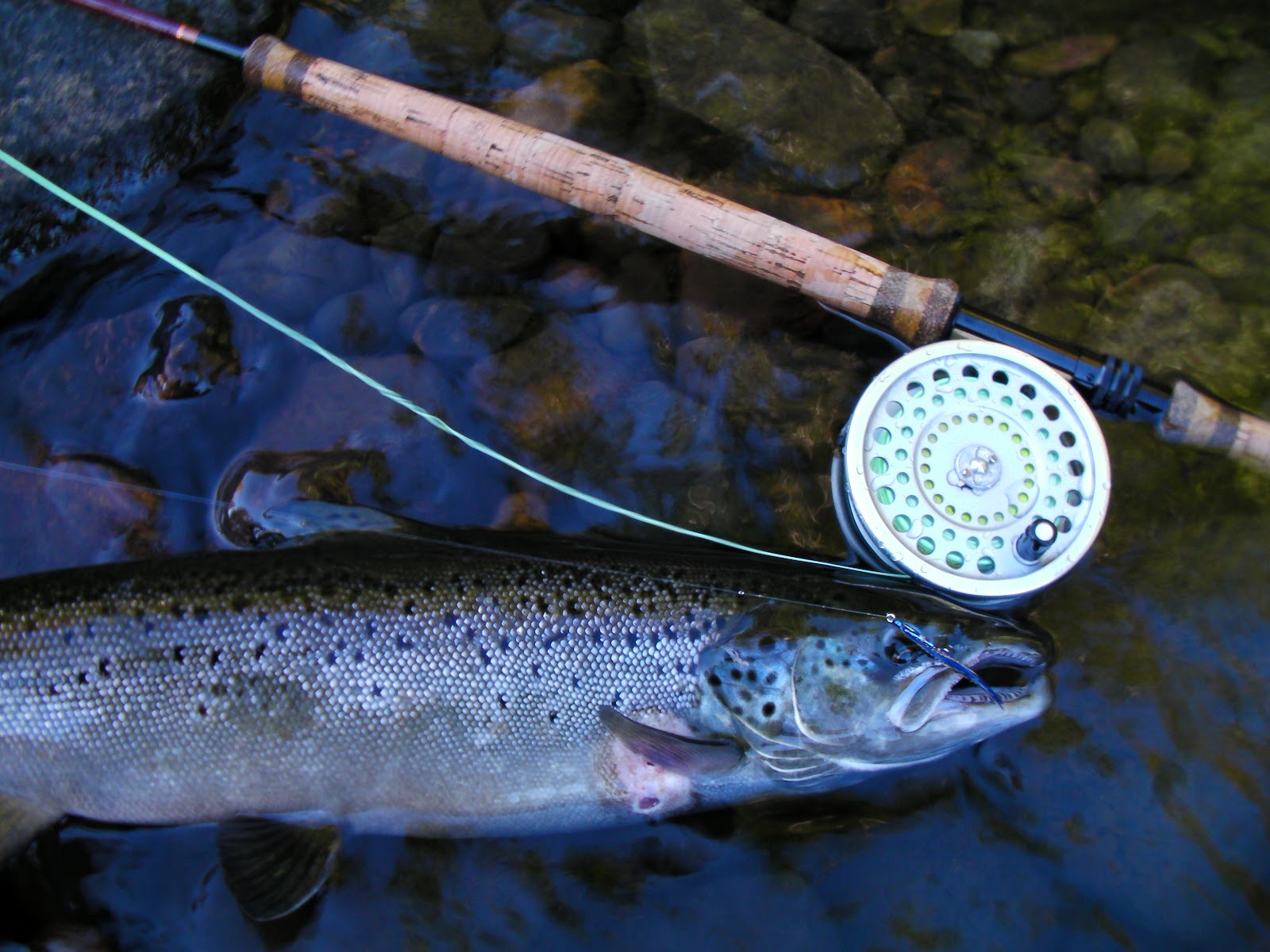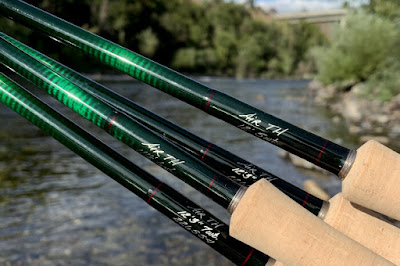Spring Atlantic Salmon: Fishing for the Silver Unicorn (Chapter 1)
Predicting the very first runs of the year is like picking the winning lottery numbers.
Most of us that are not lucky enough to live close to a salmon river will plan our fishing trips months in advance. We plan time off from work and family and book lodging and guides based on what we hope will be that magic time when the biggest and strongest of the gene pool will be running.
Most of us that are not lucky enough to live close to a salmon river will plan our fishing trips months in advance. We plan time off from work and family and book lodging and guides based on what we hope will be that magic time when the biggest and strongest of the gene pool will be running.
Thanks to nature's predictable unpredictability and the narrow window of time that these fish will run, we often find ourselves on the wrong side of lady luck even if we base our decision on previous years' records of runs, lunar phases, ocean tides and whatever else we can think of that will better our chances. Even if we happen to get the timing of the run right, other unforseen variables can get in the way of success. Spring runoff from melting snow can keep water temperatures cold and levels high. Add spring rains to the equation and you can have flooding and dirty water.
This photo was taken 2 days after we arrived for our early spring fishing trip. The river was chocolate brown and very high two days prior. We made the best of the conditions.
Trying to put yourself in the right place at right time to intercept these very few, MSW(multi sea winter) salmon in a wide, swollen, cold river can really question why we would even consider the whole undertaking.
No doubt that chance is stacked against us, but we can remove some of the variables if we can be a little more versatile and adapt to conditions. If we can postpone booking a trip to the last minute, then we can choose which days to fish based on temperature, water conditions, and most important, if fish are running.
Our guide looks on as the smell of
cedar invites us to warm up after a full day of "practicing" our casting in the cold spring water
If you dont have any friends that can or would share, then you can bank on social media. There will be plenty of happy anglers sharing photos of their success and of big silver fish on the internet's social platforms.
So the fish are in, but where and how do you get to them with your flies?
Hiring a good local guide would be your best bet! Good guides know where the fish have been, where they'll be, how to get to them, and how to get them interested in your flies. I can't say enough about how indispensable they can be if your time on the water is limited or don't have the experience of trying to find fish on your own. On most of the bigger rivers, guides with canoes are your best bet for locating fish. Not to mention that if you do hook the fish of a lifetime, you can safely follow the fish down a swollen river and have a better chance at landing it.
This excellent guide in his own beautifully handmade traditional cedar strip canoe put me in perfect casting position of a couple of large migrating springers that he spotted. He literally poled the canoe upstream in a swift current so not to spook them with the outboard. I felt as though I was bone fishing.
Depending on conditions, I will either fish a section of water all day or move from pool to pool. The latter is a great way of covering water quickly to try to find a player. Fresh fish will be takers, so covering lots of water with a well presented fly is a good bet.
Spring tube flies
The opposite is true in the pools closer to the mouth of a river, considering that there are no major obstacles such as heavy rapids or water falls. These fish are fresh from the salt and at their peak of strength so these lower pools will probably hold these running fish for only a few moments if conditions and levels are right.
These lower pools are where I'll concentrate my efforts for an entire day if I was limited to wading and if I knew that fresh fish were migrating. My goal is to intercept a migrating/resting salmon with constant step/casting in the same pools or stretches of water all day.
This can sound extremely monotonous and repetitive, but it is a great way to increase your odds of making sure some of these migrating fish get to see your offerings.
What's more, its great casting practice! It can get the casting rust out quickly from a long winter and is a great time to practice different casts or practicing with your non dominant hand.
This can sound extremely monotonous and repetitive, but it is a great way to increase your odds of making sure some of these migrating fish get to see your offerings.
What's more, its great casting practice! It can get the casting rust out quickly from a long winter and is a great time to practice different casts or practicing with your non dominant hand.
This big bend cuts current speed and narrows the river, making casting and covering water more efficient when hoping to intercept a silver spring unicorn.
When choosing a pool or run to spend a day in, I will concentrate on pools or runs where the river narrows, big bends or turns, or where rock or gravel bars will break the fast current close to the river bank. The goal is to find an area or "lanes" of least resistance that fish will use to migrate up that is within casting distance for us fishermen.
Holding and resting fish can usually be found in pools above or below a major obstacle they must overcome like heavy rapids, waterfalls, or long, shallow stretches of river.
We've hooked fish behind this current breaking ledge in very high, colored water. Salmon will seek these areas in flood events to find shelter from fast drifting debris
In high water and depending on the river structure, fish will most likely travel relatively close to shore. Resting salmon will also hold close to shore in pools and runs in high water levels. Inside seams, big boulders and rock ledges that cut the main current create perfect shelters for salmon to hold tight against to protect them from drifting debris like logs and branches.
I would not recommend fishing in flood events for obvious safety reasons on our and the salmon's part, but keep a mental note that fish will hold in these areas for a while after the river has crested and falling toward fishable levels.
So far I've illustrated how frustrating early spring fishing can be. What about the rewards? All that work and effort for a really small chance of hooking up is not everyone's cup of tea colored water. But this is big game hunting. If it were easy, then hooking up with a possible fish of a lifetime, would not be so rewarding!
If your spring fishing time is limited to only a few days, then your chances of connecting with a silver unicorn will also be limited. "Nothing worth having comes easy," should be the mindset going in!
although they are few and far between, the biggest and strongest of the run will enter their natal rivers first. If you're in the right place at the right time, sometimes your lotto numbers come in!
In Chapter 2, I'll be focusing on the flies, lines, tackle, and presentations I prefer to use for early spring Atlantic Salmon fishing.
Thanks for taking the time to check out the blog!
A Black Dog tubefly conversion













Comments
Post a Comment